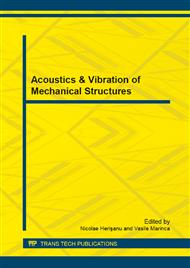p.213
p.217
p.222
p.230
p.237
p.244
p.251
p.257
p.262
Application of the Prediction Model "SCHALL 03" for Railway Noise Calculation in Serbia
Abstract:
Application of the prediction models for railway noise indicators calculation, which was already developed by other countries, represents a major challenge in Serbia. Prediction model "Schall 03" was developed in line with technical and technological characteristics of the rolling stock and infrastructure of German Railways. Prior to its application at the national level, due to different technical-technological characteristics of railway stock and railway infrastructure it is necessary to perform its validation and, depending on the needs, the calibration in accordance with local conditions. This will assure accuracy and precision of the calculations of noise indicators, as well as confidence in the results obtained by prediction model "Schall 03". This paper presents the analysis of the possibilities to apply German prediction model "Schall 03" on the Serbian railway network, more precisely railway section from Belgrade to Romanian border. Calculated values of noise indicators were compared with the results of measurements of noise indicators within measuring interval, which correspond to the referent time intervals for different day periods.
Info:
Periodical:
Pages:
237-243
Citation:
Online since:
September 2013
Keywords:
Price:
Сopyright:
© 2013 Trans Tech Publications Ltd. All Rights Reserved
Share:
Citation:


